Due to it being Suicide Prevention Month and Suicide Prevention Day, I thought I’d share some information about the realities of suicide, warning signs, what you can do, and a little about my personal experience.
The Reality Of Suicide
According to WHO, worldwide, it is estimated that 793,000 suicides took place in 2016. That might not seem like a lot, but during the same year, according to Our World in Data, 87,432 died of battle-related deaths in conflicts involving 1+ states. A figure that is also supported by Peace Research Institute Oslo (PRIO), which reported a figure of 88,000 deaths. These figures highlight the scale of deaths by suicide in 2016 alone. A sobering thought.
In the Independent, they reported that the UK is experiencing a 16-year high when it comes to its suicide rate. The rise is largely due to an increase in men and boys taking their own lives. They report that the Office for National Statistics (ONS) data states that 6,507 people took their own lives in 2018, up 12% in 2017. It also makes it the highest rate since 2002.
According to CNN and Time magazine, the suicide rate in the US is up 33% since 1999, making it the highest it’s been since world war 2 (since 1942).
17 Suicide Warning Signs
- Suicidal ideation: thinking, talking, or writing about suicide, planning for suicide.
- Feeling like they’re a burden.
- Engaging in substance abuse.
- Feeling like they lack purpose.
- Anxiety or agitation.
- Sleep disturbance, either sleeping too much or not very much, if at all.
- Feelings of being trapped.
- Feeling hopelessness.
- Problems at work or with their studies.
- Withdrawing from family, friends, and society.
- Anger or rage.
- Impulsiveness/Recklessness.
- Mood changes including depression.
- Feeling uselessness.
- Settling outstanding affairs.
- Giving away prized or valuable possessions.
- Making amends when they are otherwise not expected to die.
For more information about suicide and mental health, check out my previous post, Mental Health: The Figures.
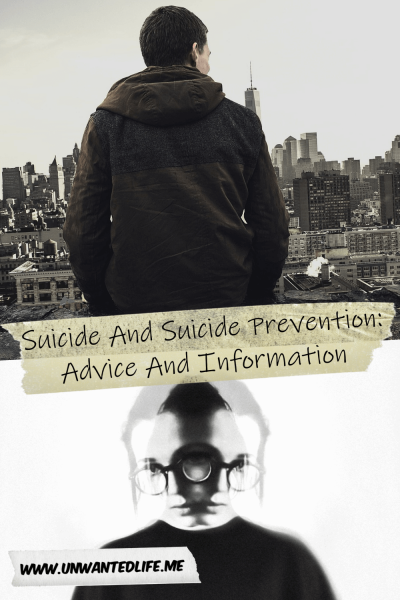
5 Things You Can Do This World Suicide Prevention Month
- Raise awareness about suicide.
- Educate yourself and others about the warning signs.
- Fight and question the stigma.
- Share your own experiences.
- Be empathetic and show compassion.
10 Mental Health First Aid Steps To Help Someone Who Is Suicidal
-
Prepare yourself to approach the person and talk about your concerns.
Prepare by leaving your judgements and misconceptions at the door. Your attitudes surrounding mental health and suicide will be picked up by the person you’re trying to support. Remember, it’s not about you and your cultural/religious beliefs, it’s about being there for the person who needs your support and providing it for them.
-
Ask and then listen.
Asking a question like “Are you feeling suicidal?” tells the person that you’re ready and willing to talk about suicide in a supportive and non-judgmental way.
You could also ask “how can I help?” because this will help to focus on what reasons they have for living. It also stops you from imposing your reasons for them to stay alive, especially if you don’t know their personal situation.
-
Never promise to keep their thoughts of suicide a secret.
Don’t make a promise to keep their suicidal thoughts and feelings a secret, because this could put you in a bad position. You may have to break that promise in order to keep the person experiencing these thoughts and feelings, safe. Once that trust is broken, they may not turn to you in the future for support.
Instead, should they try to get you to agree to keep this a secret, you should try to be understanding and talk to them about it. Explain how you couldn’t make such a promise if it meant putting their wellbeing at risk.
-
Be supportive and understanding.
Remember, one of the most important things you can do is to be supportive, caring, and understanding if you find yourself in this kind of situation. It’s important the person knows that you care and that you want to help them than to worry about saying the “right” things.
Make sure to give the person your undivided attention whilst you make sure they know and understand that you care for them and that others do, too.
Also, even if you don’t understand why they want to end their life, don’t dismiss the person or their motivation to want to do so.
Lastly, acknowledge the courage that it takes for the person to speak honestly about their feelings and thoughts.
-
Be there
You can be there for them by physically being present, but you can also be there for them by talking on the phone, messaging them, or any other way that shows them you’re there for them. However, don’t commit to doing anything that you’re not sure you can do or are unable to accomplish. Again, this could damage the trust between you, which means they might not reach out for support from you again.
If they do require someone to be physically there and you’re unable, help them to figure out who else could help support them, if they’re appropriate and willing to do so.
-
Establish whether the person is in immediate danger.
A person experiencing suicidal thoughts may have felt that their life isn’t worth living. Thus, it is important to figure out if the person experiencing suicidal thoughts is likely to harm themselves or if they’re in any immediate danger.
Ask the person questions such as whether they have a suicide plan, if they’ve attempted suicide before, or if they have been using drugs and/or alcohol. This is because intoxication from substances can increase someone’s likelihood of acting upon their suicidal thoughts.
-
Keep the person safe.
If you believe that a person is at risk of taking their own life, take steps to help keep them safe. Don’t leave them on their own. If they have friends or family, they can turn to, and seek out a way to contact them so they can support the person.
If you are unsure how to act in such a situation, you could call a 24-hour helpline or the emergency services, where someone will help you out.
-
Help them connect and seek professional support
Much like I stated above, help the person connect with long-term support, and make sure they’re aware of crisis helplines they can call, message, or even chat with through an online messaging service.
-
Follow up
If possible, reach out to the person to follow up on how they’re doing. It’ll help them feel like there’s someone who cares about their wellbeing. Send a message or call. It doesn’t really matter how you reach out, but reaching out will mean a lot to the person.
-
Listen.
Remember, at every step, listening is important. Often, keeping the person talking is all you need to do until the moment passes.
My Personal Experience With Suicide
Two people I’ve personally known have unfortunately managed to take their own lives, and I have friends who have had loved ones who’ve taken their lives as well.
At university, I saw a friend try to take their own life, trying before we even knew anything was wrong. They went from being fine one minute, then trying to take their life after a phone call. Luckily, they survived and are now living a full life with their partner.
Bizarrely, or I guess given the WHO statistics, not that surprising, all those I’ve known to take their lives or who have tried have all been male.
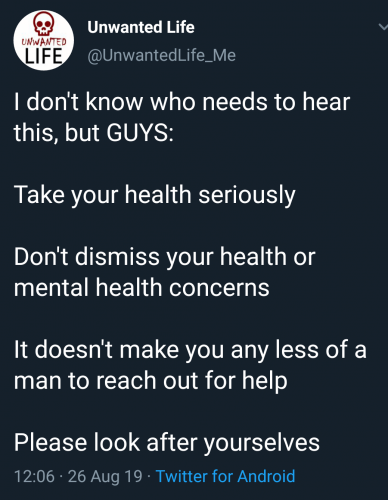
I’ve struggled with suicidal ideation since I was in primary school (Suicidal Child). All as a result of racism from my peers, abuse from teachers and adult chaperones, and emotional neglect from my mother.
I’ve even attempted to take my own life on several occasions. But with my constant suicidal ideation, it’s a 24/7 battle to stop myself from acting on my thoughts. Fortunately for me, I haven’t tried since 2003, but I had a close call last August when everything just kept going wrong me until eventually the last straw broke the camel’s back. This left me consumed with a single thought for hours: the thought of how I was going to end my life. But I made it through it without attempting it.
As always, leave your feedback in the comments section below. Also, feel free to share your experiences of suicide and suicide prevention and help stop the stigma in the comments section below as well. If you want to stay up-to-date with my blog, then sign up for my newsletter below. Alternatively, get push notifications of new articles by clicking the red bell icon in the bottom right corner.
Lastly, if you’d like to support my blog, then you can make a donation of any size below as well. Until next time, Unwanted Life readers.
Worried About Someone?
Having a difficult conversation
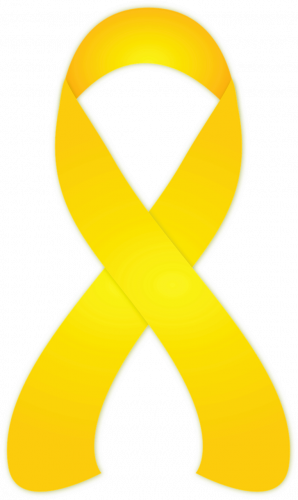
Support
Call: 116 123
Email: jo@samaritans.org
National Suicide Prevention Lifeline
Call: 1800 273 8255
Online chat: Lifeline Chat
If you feel you need help, then visit my Global Crisis Lines or my UK Crisis Lines And Support page for a detailed list of Crisis Lines, Help Lines, Text Services, Webchat, and more you can contact.
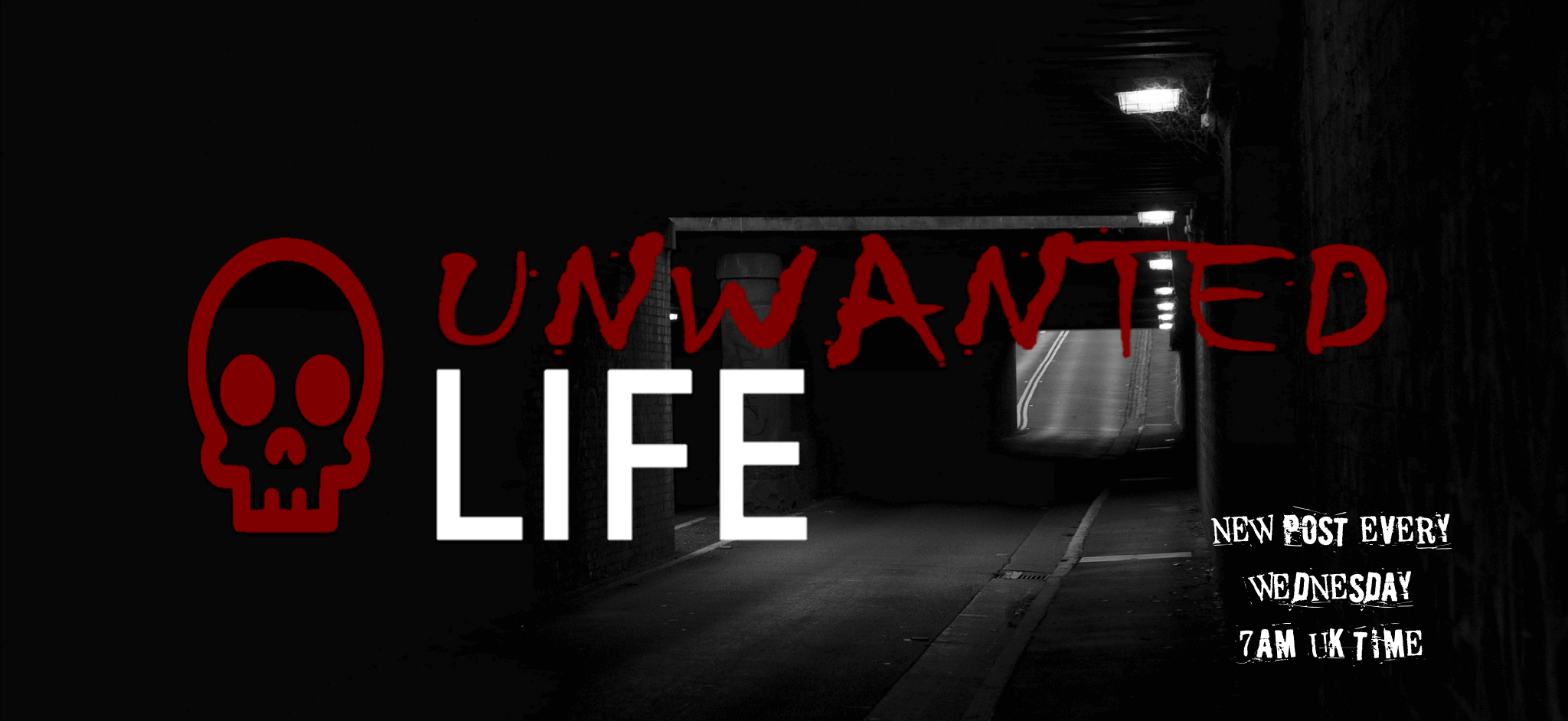
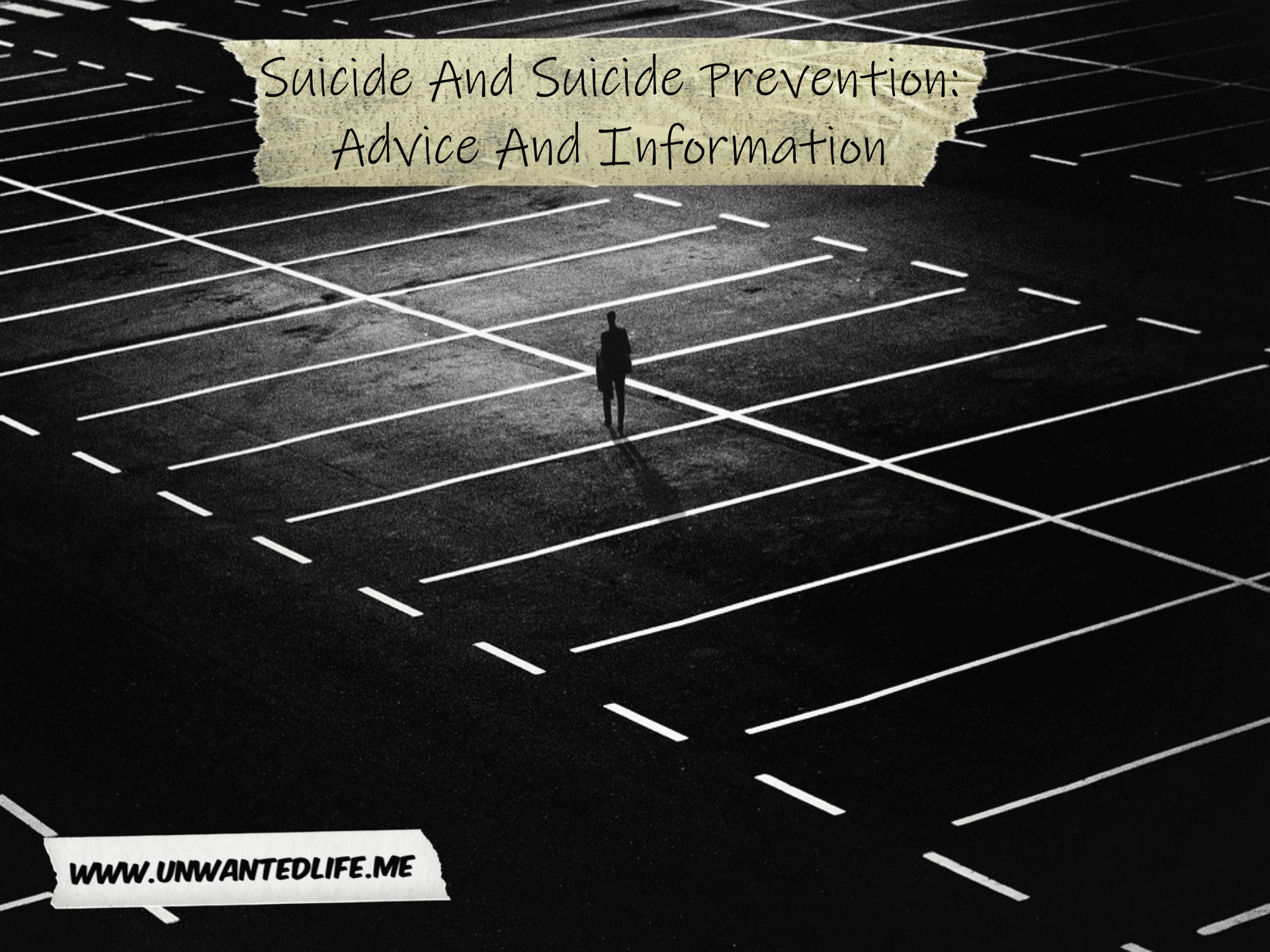

This isn’t a topic that is easily talked about but it is such a dire one to be discussed. Thank you for your bravery. This post is very informative and resourceful.
Thanks for taking the time to read it
Leaning what to do when someone is going through this and what to do when you are going through this. i love the fact that this is out their for people to read.
Thank you for sharing this knowledge!
Thanks. At the moment I’m trying to create a new page that’ll have contact details for as many help and crisis lines as I can find. Ideally for as many countries as I can find them for as well
So important!
Thanks
First, I am glad you are still with us. As with many of us, I suffer from depression and anxiety on a regular basis. Thoughts of just giving up have crossed my mind from time to time and, thankfully, I have managed to acknowledge them, push them aside and keep going. We struggle with our ‘demons’ every day. I dont mean that in the biblical sense but in the ideological. Those ‘demons’ are the things in our minds that tell us we are useless, unwanted, a burden, and that we should just throw in the towel, those ‘demons’ are part of us as much as we are part of them. I know that they will never go away but I keep fighting them using any and all support that I have, some days are certainly better than others. I have a decent support system with some very good friends who share in the same struggles. Every day and every breath is another win for us all.
Again, I am glad that you are still with us. Should you ever need someone who is willing to hear you, I am here out in the blogosphere listening.
I’m glad you’ve got supportive friends to help you, and thanks for sharing your experience
I have struggled with suicidal ideation since I was very young as well as a result of neglect and sexual abuse, that resulted in depression and cpstd and now borderline. I have had a few attempts and thanks to good friends I am still here. Having a good support team and safety plan is essential to staying safe.
Thanks for sharing your story. Having a good support system and a safety plan can make all the difference in the world
The growing rates of suicide are scary, and despite everything that advocates are doing it just feels like the stresses of life are not getting any better. We recently had Mental Health First Aid training at work and I wish everyone got offered it – undertaking it means I now have a good understanding of physical and mental side effects of mental health issues and can competently deal with those who are suicidal ro experiencing other issues, which is just invaluable right now. Hoping more employers will take it on and get their staff trained up. Thanks for sharing such great advice and awareness as always!
I’ve been looking into doing a Mental Health First Aid course, but I want to wait until my PPPD and reactive hypoglycemia becomes better managed in order to take in the training properly. It’s really hard to learn anything when you’re dizzy and having hypos that last hours at a time.
But you’re right, more businesses should get Mental Health First Aid training, especially those dealing with at risk clients. None of the addiction charities or mental health charities offer it where I am, at least they didn’t a year ago. Hopefully that’s changed by now
Such an important topic and one that needs to be talked about more. I struggle with depression, anxiety and occasional suicidal thoughts too. Thanks for sharing your story and tips.
Thank you for taking the time to read my post 🙂
I really loved reading this. i feel like suicide isn’t something that society is willing to talk about very often.
There is a difference between hearing someone’s story and having to experience it first hand.
Last year my aunt committed suicide, so i understand how it is losing someone that way. it effing sucks. While my family may be “embarrassed” of the situation, I get why she did it.
I’m sorry to hear about your aunt. I hope you got the support you needed with handling such an experience
Those are extremely frightening statistics. I don’t think you can ever raise enough awareness of this issue and your points about taking time to listen, talk, and offer support in any way you can are great. I’ve never experienced suicide in my family and I hope I never do but awareness is key, so thank you for sharing such a well-written post, Lisa x
Thank you
Such an important post and so very well written ♥ It is so vital to have the right people around us. A few years ago the people in my life were so toxic, I would never want to share anything with them. My life has now changed for the better and the people in it are a lot healthier for me, which I can never put into words just how much I appreciate.
It makes a huge difference having the right people around you. I’m glad you’re in a much better place now.
I’ve had to cut a lot of people out of my life who were just bad for my mental wellbeing, so I know exactly what you mean
Kudos to us for being strong enough to do that! x
Kudos indeed ?
I’m going to keep sharing this every so often for 2 reasons.
1. It’s a truly wonderful informative post.
2. I want people to think about others with mental health problems or suicidal thoughts more often.
The only thing I would add to this, which I didn’t know until my own attempt a few years ago, was that you can walk into any A&E department any time on any day and ask to speak to the crisis team. And you will be given immediate help.
I personally think every day should be suicide awareness day, but I appreciate the sentiment behind your post and why you chose to post it to coincide with the day.
It really winds me up when I see people I know sharing little quotes on SPD or mental health awareness week when I KNOW they don’t mean it. Some of these people are people who literally turned their backs on me when I needed family/friends, and as much as I could think: well maybe they learned from it and want to help others, I can’t help being angry that they share things to make it look like they care, when they actually don’t.
I’m sorry you had your own personal experience with wanting to take your own life, and that your loved ones weren’t there for you. I hope you have more supportive people in your life now.
I didn’t know about the a&e and the crisis team, how long between asking for them and them coming to help you?
I do thank you. It’s a shame I went down that path, but thankfully I had some great intensive support.
The crisis team are always in A&E so you can literally walk in there, ask to see them and be talking to them in a very short amount of time. It’s not really advertised, but they are fantastic. I had visits every day for a few weeks, and then scaled down after while to less frequently until I was comfortable to be discharged. I even had a psychiatrist come to see me who switched my meds up.